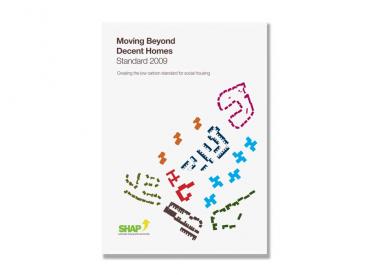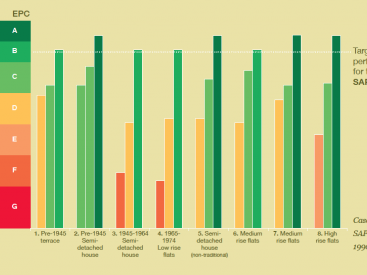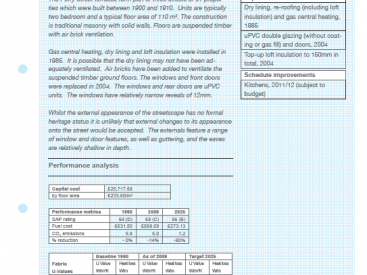Beyond Decent Homes
- Project date
- 26.08.2010
- Type
-
- Research
- Retrofit
- Location
- West Midlands
- Clients
- SHAP
- Associated team members
- Associated documents
The SHAP Beyond Decent Homes Standard is designed to set social housing on a course to support delivery of the UK’s Low Carbon Transition Plan in which the Government expects the domestic sector to deliver a greater share of emissions reductions, of at least 29% on 2008 levels by 2020, with proposals that all homes undergo a ‘whole house package’ of improvements by 2030.
But it is about more than just carbon reduction. It is about continuing the drive for improvement started by the Decent Homes programme. Whilst substantial modernisation has taken place, new priorities mean that the ‘thermal comfort’ criteria no longer goes far enough. Never intended to be more than a minimum performance standard it has meant that opportunities may have been missed to comprehensively tackle fuel poverty.
This new Standard seeks to provide genuine equality of living standards for all social housing tenants. It aims to bridge the gap between modern social housing – some of the most energy efficient in the country – and the wider stock – still containing some of the poorest performing in the country.
It also seeks to capture the wider benefits of investment, not just for tenants and their landlords, but also the construction industry as it gears itself up to deliver a low carbon transition in the wider housing stock. This is because social housing is in the best position to deliver greater carbon reductions, earlier and at lower cost.
Background to the Standard
Commissioned and funded by the SHAP partners the Beyond Decent Homes Standard was written and designed by Nick Dodd, Charlie Baker and John Sampson from URBED with support from Ellie Horwitch-Smith, Lee Wild and the QS team at Faithful+Gould, and project management by John Sharpe from Bates Wood.
From the outset the Standard was developed and steered with the direct input of West Midlands social landlords and HMR pathfinders, and the Homes and Communities Agency (HCA) and the Tenants Services Authority (TSA) have contributed their expertise.The HCA and TSA positions on social housing retrofit support and reinforce this Standard.



